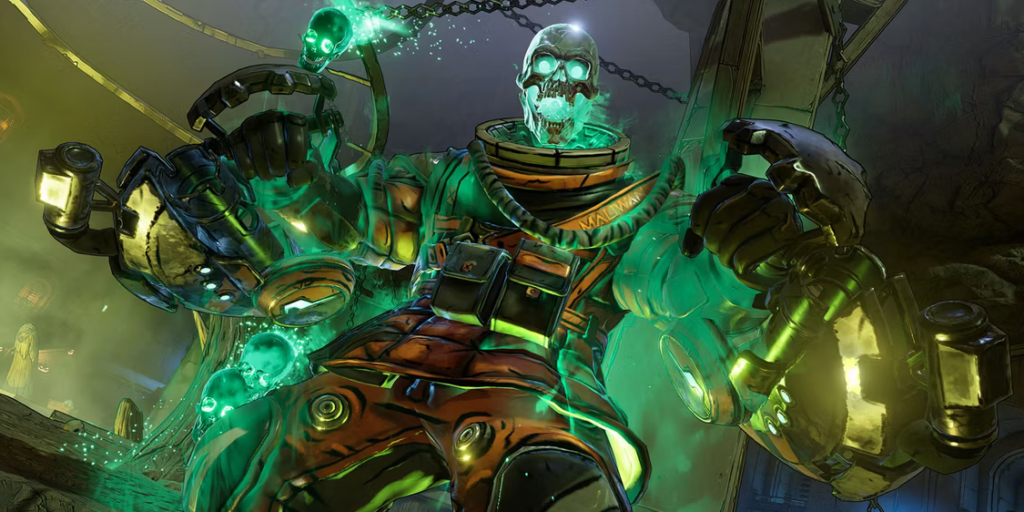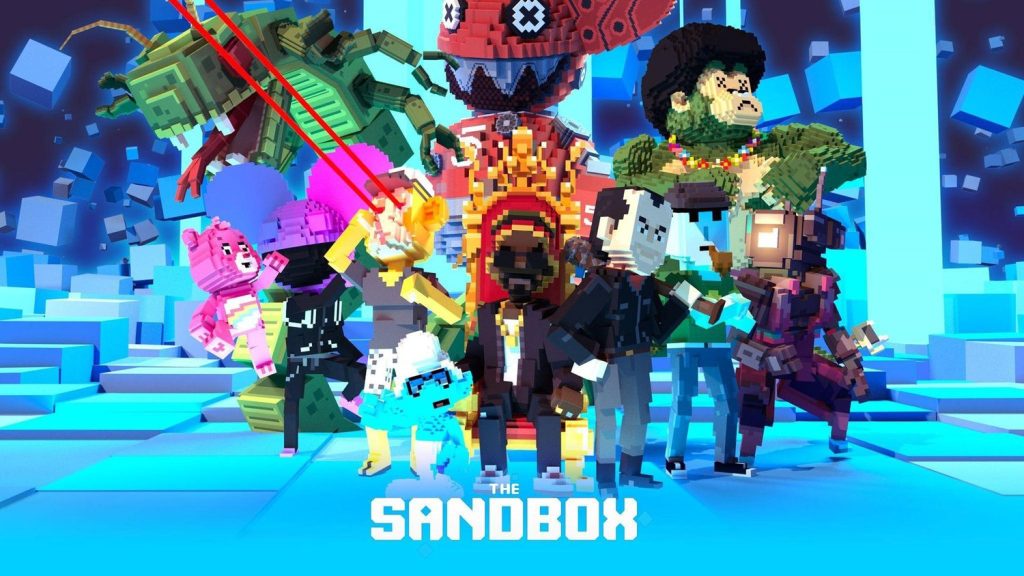
Source: My Game Wallpapers
This research essay was originally posted on Naavik Pro - the #1 research portal for blockchain and F2P games! We serve both investors and developers with our premium research. Make us your remote games research department today!
Axie Infinity popularized “Play to Earn,” but the next hottest buzzword in the blockchain gaming space is “Virtual Real Estate.” According to the Motley Fool, nearly a quarter of all NFT sales in early December were for Digital Land, and the buzz has gotten so hot that we’ve seen multiple articles on the subject from the mainstream media, with takes from The Wall Street Journal, Fortune Magazine, USA Today, Bloomberg, and The New York Times.
At the same time, there’s an increasing investor hunger for user-generated content (UGC) platforms. Most notably, Roblox’s explosive IPO last year earned the company a valuation well above $40 billion. Roblox joins Minecraft and Fortnite to form an intimidating triumvirate of so-called “metaverse” platforms where players don’t just play games but actively shape them. Most importantly, these platforms have become a sort of “third place” where players go to just hang out with their friends and socialize, something that has become particularly central to their lives in the age of COVID. These services are properly understood not simply as games but as a novel mix of gameplay, content distribution platform, and social network.
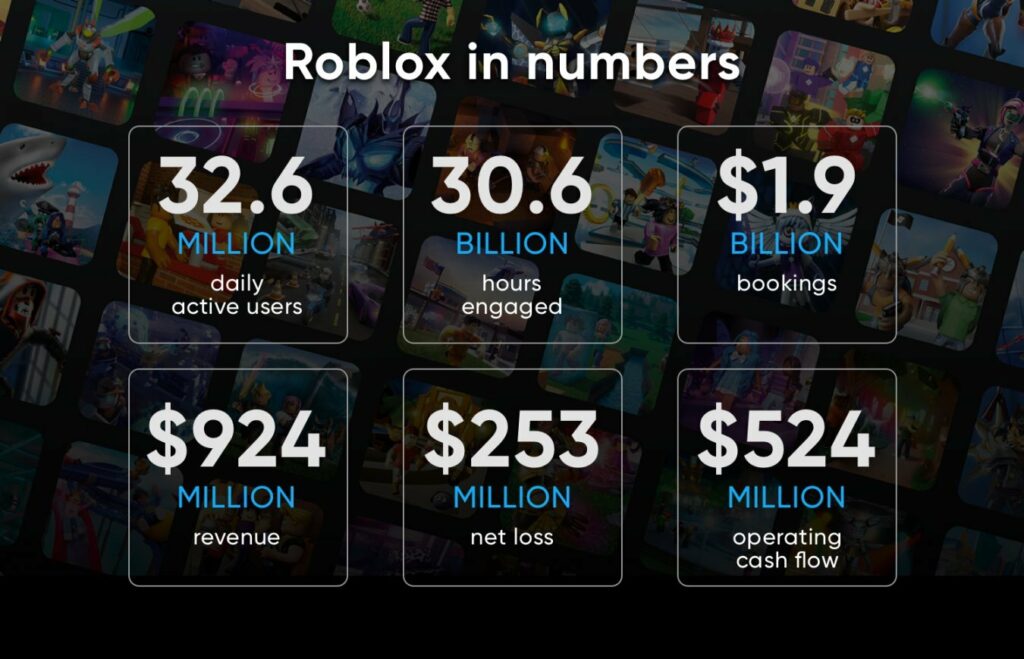
These platforms make an incredible amount of money. In 2020, Minecraft earned $415 million in revenue, Roblox earned $920 million, and Fortnite earned $1.1 billion. As the next generation increasingly spends more time online, many investors (and speculators) are hoping to become real estate tycoons in the metaverse. Or as Janine Yorio of Republic Real Estate famously told Bloomberg, “Buying land today in virtual worlds may end up feeling a lot like buying land in Manhattan in the 1750s.”
One game is consistently mentioned in these articles: The Sandbox, a voxel-based UGC platform with an aesthetic somewhere between Minecraft and Roblox that’s clearly attempting to emulate gameplay aspects of both. In The Sandbox, players explore a virtual world of interconnected land plots, each of which can host an interactive experience created by another player. The land plots themselves are privately owned and can be bought, sold, and traded for cryptocurrency, and, crucially, are required for deploying player-created experiences. Players can also create custom 3D assets and animations to place in their virtual worlds, which in turn can be sold to other creators through an asset marketplace.

The Sandbox boasts some truly eye-popping statistics:
- $13.8 billion fully diluted market cap for its SAND token (source: CoinMarketCap)
- $10,000 floor price for land (source: OpenSea)
- $1.45 billion in traded land value (source: Naavik, see below)
- A return on investment of over 11,000% for the past year
Looking more broadly, there are two other leading “digital real estate” platforms in the crypto space that are consistently mentioned alongside The Sandbox: Axie Infinity and Decentraland.
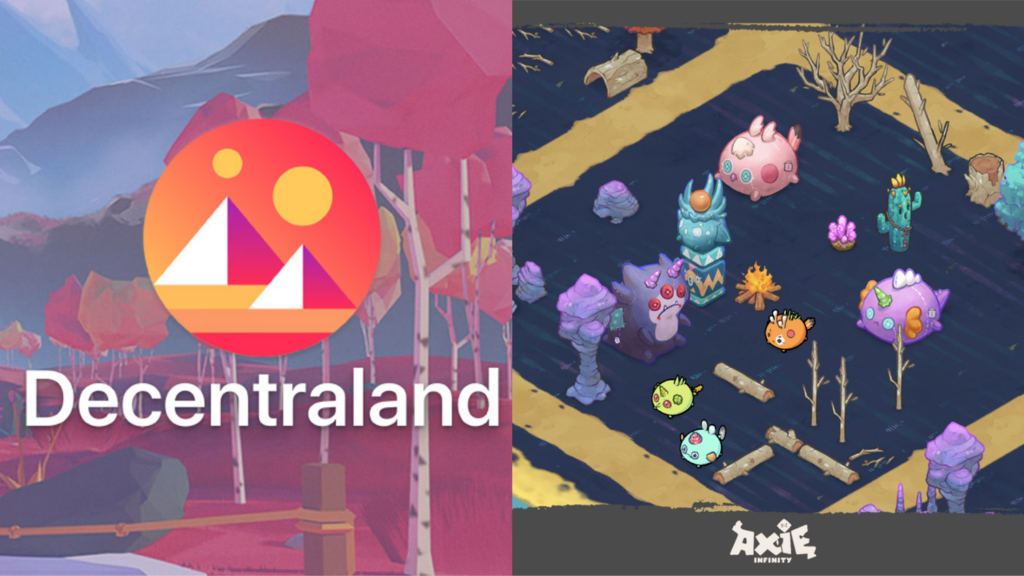
Axie Infinity has yet to launch its long-touted “Land Gameplay,” and it’s seen the economy of its base creature-battling game take a beating in the last few months, right in line with our predictions. The ultimate lesson of Axie Infinity is that a pure "Play-to-Earn" model can grow for a good while but is fundamentally unsustainable in the long-run; these games require new modes and features that also attract non-income-motivated players. Plus, if most players show up out of pure financial motivation, you should interpret most of your statistics (and assumptions about player loyalty) through the lens of a job rather than that of a game.
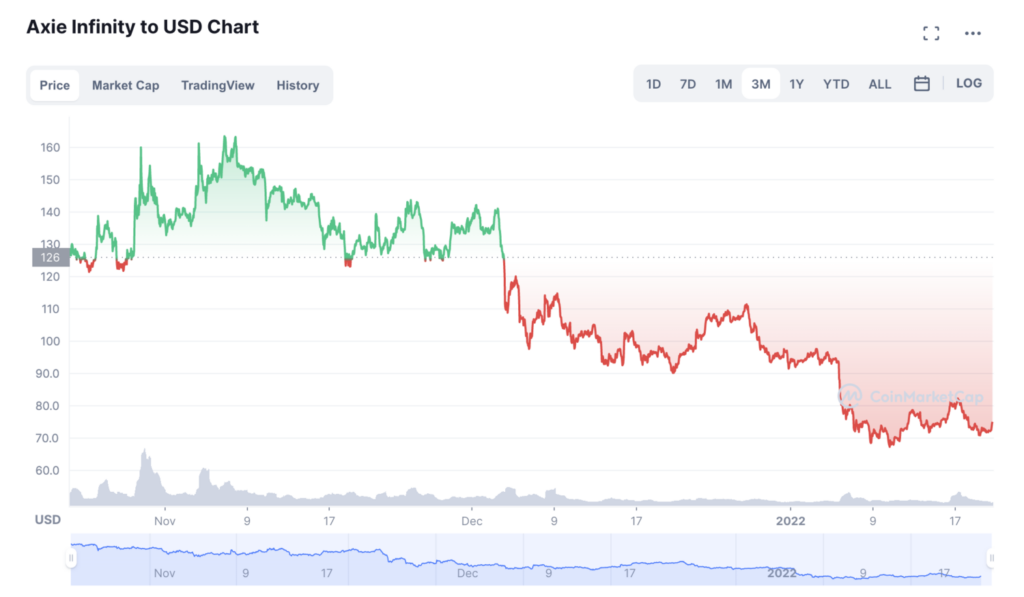
Justifiably, Axie Infinity players seem to be pinning most of their hopes on upcoming game modes, Land among them, but Sky Mavis has offered little more than teasers so far. Worryingly, Sky Mavis surprised everyone by committing to a full-3D art style out of the blue, which any veteran game developer will tell you can only delay the release considerably.
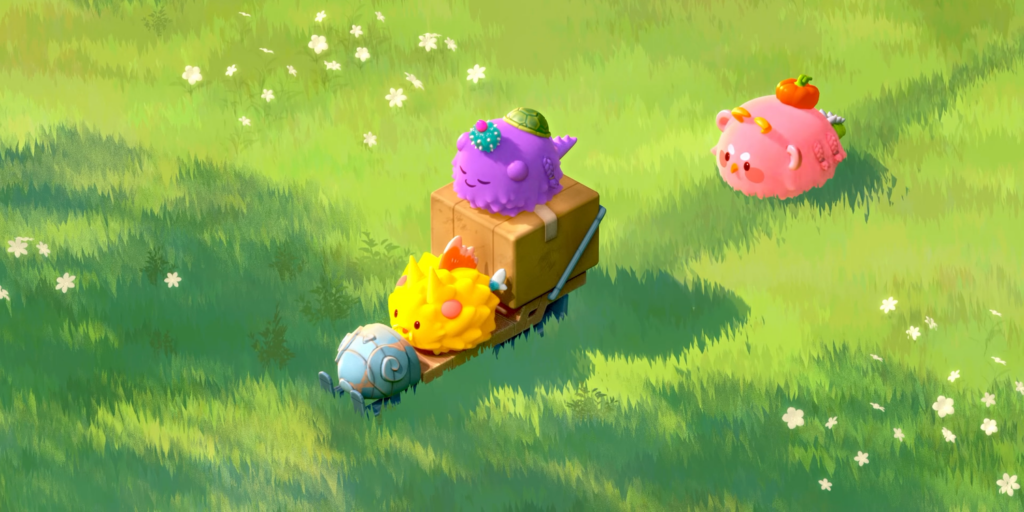
Decentraland, on the other hand, has been playable for nearly two years. At the time of writing, the fully diluted market cap of its MANA token is “only” $6 billion, a little less than half of The Sandbox’s. Of the three virtual real estate projects, Decentraland is the most mature and furthest along in development, boasting a browser-based game client that you can jump in and play right now.
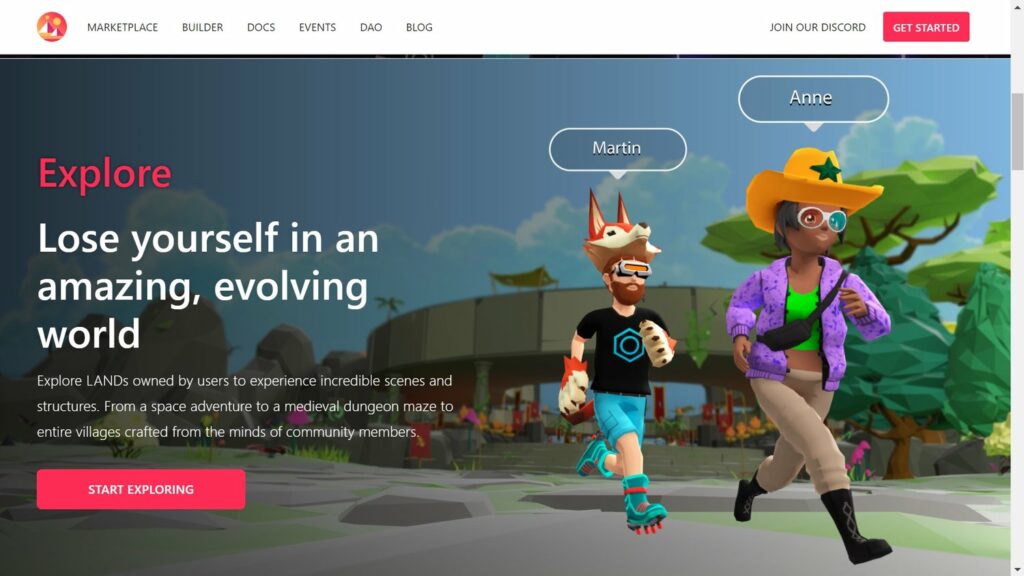
The Sandbox sits somewhere in the middle of the two projects. It boasts a set of player creation tools as well as rich land sales, but current gameplay offerings are extremely limited. A closed alpha was offered in December, during which a select group of players who held one of 5,000 “Alpha Pass” NFTs were allowed to explore 18 curated experiences. Players without an Alpha Pass were still allowed to play, but could only access the hub world and three experiences, and they were barred from all play-to-earn activities. In all, the brief event lasted 21 days.
These three games are pitching themselves as the future of UGC-based “metaverse” gameplay on the blockchain. The pitch is that these platforms will carve out large “digital nations” and one day rival and even eclipse Roblox, Minecraft, and Fortnite, as well as Facebook/Meta’s potential offerings.
But blockchain games aren't the only ones who want a bite of the apple, and The Sandbox’s developer, Pixowl, would do well to remember that it faces competition on the conventional game front as well. We see not only towering titans like Roblox, Fortnite, and Minecraft, but also scrappy startups like Rec Room, VRChat, and CORE.
Another curious contender is DotBigBang, a browser-based voxel sleeper hit that invites a direct comparison to The Sandbox, but without the crypto and virtual landlords. This game has flown under the radar, spread almost entirely by word of mouth and has far more user-generated experiences (with much higher engagement) than The Sandbox.
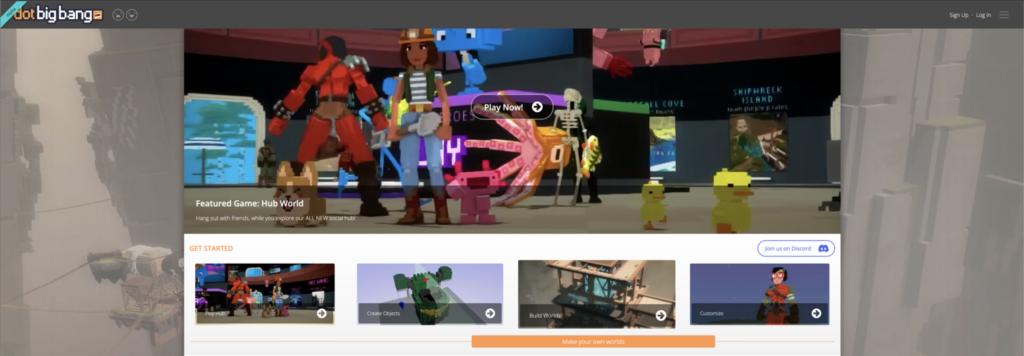
The Sandbox has not been particularly forthcoming with its statistics. Many press articles will tout an install base of 40 million users, but if you look closely you'll see this is referring to The Sandbox franchise of games, which includes the two prior mobile games. The most concrete information we've been able to find comes from this blog post in which we are told the following about the game:
- 500,000 unique connected wallets
- 30,000 monthly active users (MAUs)
- ~15,000 users who play for more than 1 hour a day
These stats are not particularly impressive. Even Second Life, an ancient UGC "virtual world" platform from all the way back in 2003, and whose hype cycle crashed in 2008, beats these statistics easily. Second Life still has more peak simultaneous users (40,000) in recent months than The Sandbox has MAUs. And Second Life has more MAUs (750,000) than The Sandbox’s entire total player base.
Pixowl clearly still has room to grow, and we look forward to seeing detailed stats from the past two months. For proper analysis we hope to see daily metrics rather than monthly aggregates, given that limited-duration Alpha tests tend to artificially compress user activity and don’t accurately reflect baseline engagement. But let's zoom out real quick and get some context for what all these numbers mean. What are "good" stats for other platforms in this space? Here's a table of projects we were able to nail down rough figures for:
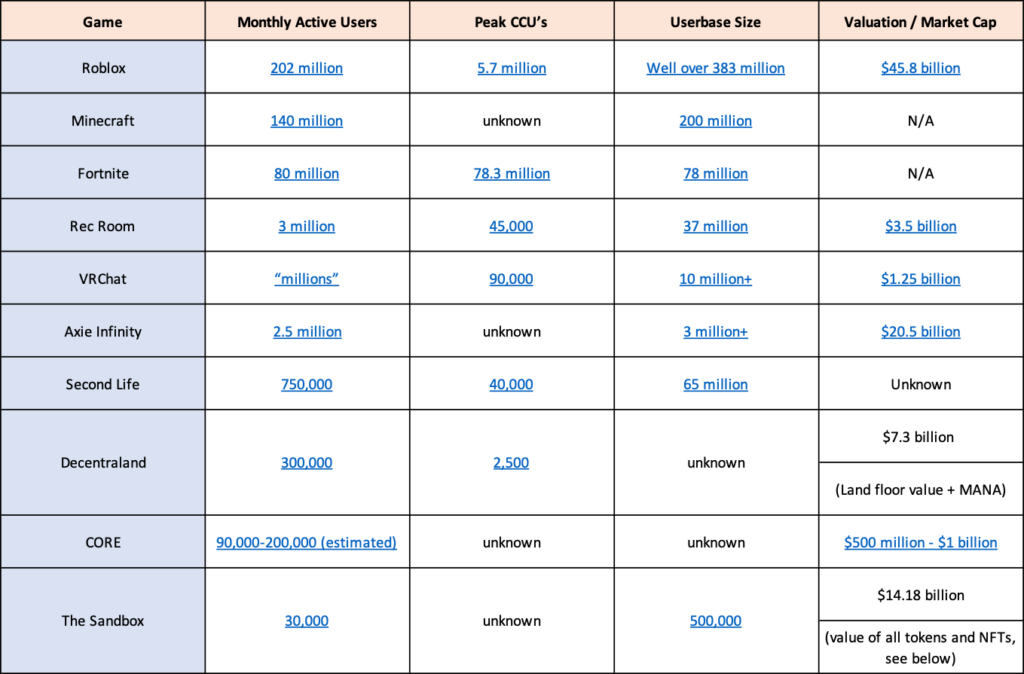
The Sandbox has an incredibly high total ecosystem token valuation, but it has the smallest userbase of all the platforms we have stats for. Effectively, investors are valuing The Sandbox’s MAUs at $472,000 dollars each. Is this an unfair comparison? On one hand, perhaps it is given the fact that The Sandbox is in Alpha while most others are fully live. However, on the other hand, it’s worth comparing solely based on the fact that the project is being valued multiple times higher than other platforms despite the fact it’s in Alpha. Its market cap per MAU is nearly 20 times as much as a Decentraland user and more than 400 times as much as a Rec Room user. The platform is essentially being priced as if it’s already fully live and extremely successful, even though it’s barely gotten started.

This is an unfathomably high ratio. But is it just a curious quirk of math because the platform is young and the user base is still fairly small? If you look at a huge mature game like Roblox you see its ratio has been driven all the way down to $227/MAU, which most analysts would still consider a high number and factors in meaningful growth. Could Roblox have had a much higher ratio when they were small? Let's take a few steps down the ladder and see for ourselves.
The first rung down from Roblox is Rec Room. Widely considered a huge breakout hit, it is still two orders of magnitude smaller than Roblox and sports a ratio of $1,167/MAU. If we go a step further we come to CORE, a game that has attracted a huge amount of investment but is still early in its growth cycle. This seems like a reasonable comparison, and indeed its ratio is many times higher than Rec Room’s, sitting at $5,000/MAU. But we're still approximately two orders of magnitude short of The Sandbox's valuation-to-MAU ratio.
Perhaps this crazy ratio is just the natural premium for being a crypto game? Fortunately, we have two other land-based crypto games to compare it to. Let's start with the top of the pack, Axie Infinity, which has $10,250/MAU, a good bit higher than CORE. Next stop is Decentraland with three times that, $24,333/MAU. That's an anomalously high ratio as it is, but even so The Sandbox’s ratio is still nearly 20 times higher.
What all the other games have in common is that they actually have comparatively more MAUs. The Sandbox alone sticks out of the pack as a game that has attracted incredible investment but a relatively minuscule number of actual players so far.
Let's compare things another way. These are all UGC platforms, so let's see how much content users have been uploading. We'll then compare the number of experiences to the amount of investment the game’s company has received from formal investors, excluding all token valuations.

The Sandbox comes in dead last of all the other platforms we have stats for. If we look at the investment ratios, we get $24,017/experience for The Sandbox (only counting formal investment dollars, not token values or any money raised from land pre-sales), $9,957/experience for CORE, $1,088/experience for VRChat, $2,930/experience for Rec Room, $222/experience for DotBigBang (although we’ve heard reports that there may have been additional funding rounds not yet posted), and $36/experience for Roblox. The Sandbox’s is slightly less out of whack here, sporting a ratio of a little more than twice that of CORE (both platforms, of course, not being widely available yet). Even so, The Sandbox has the highest ratio of them all, at least based on publicly announced funding.

Clearly, formal investors and token holders alike believe in The Sandbox enough to bestow upon it a valuation north of $10 billion across its tokens. All of these investors are expecting a return, which in a sustainable future can only come from a large population of content creators and players. We are therefore left with these critical questions:
- What, if anything, could justify such an optimistic outlook?
- What is The Sandbox's plan for getting there?
- Does the team have what it takes to pull it off?
In this deconstruction, we will answer these questions by charting the path The Sandbox has trodden so far, evaluating the current state of the game, and analyzing the team’s stated plans for the future. We’ll also analyze the economic dynamics between creators, landowners, and players, dig into the various tokens (LAND, SAND, and ASSETs), as well as share our thoughts on the game’s level of decentralization.
Could The Sandbox become the Roblox of blockchain games? Will its land-based model become a valuable hub in the emerging metaverse? Let’s dive in and find out.
This research essay was originally posted on Naavik Pro - the #1 research portal for blockchain and F2P games! We serve both investors and developers with our premium research. Make us your remote games research department today!




